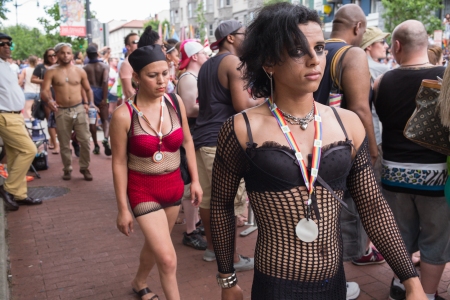Bardists, as they like to be called, dream of finding an unpublished Shakespeare play. Our needs are simple: we’ve only been waiting for 40+ years for a decent live album from the greatest tour of all time — the Rolling Stones’ 1972 foray across the U.S. — to emerge from the gauze of bootlegs and into the bright shimmering light of an official release. As of today, we’re very, very close.
For those who signed up for the Extra Super Duper release of Sticky Fingers, or whatever it’s called, last night came a happy email: all 33 tracks had, like the Midnight Rambler himself, vaulted our hedge and hidden away deep in our iTunes collection. Yeah, yeah, an acoustic version of “Wild Horses,” and all that. As far as we’re concerned the release of the Eric Clapton version of “Brown Sugar” simply drives down the value of our red vinyl pressing we’ve carried us with everywhere since 10th grade. The good stuff is the 18-songs worth of live material, recorded on the Stones’ 1971″Farewell Tour” of England, prior to loudly going off as exiles on the main street near St. Tropez.
It’s not the ’72 tour, but it’s the same band with the essential sidemen: Mick Taylor on guitar, Nicky Hopkins on piano, and Jim Price and Bobby Keys on horns. We call Taylor a sideman, and that’s not really fair, but let us just posit that these four, added to Jagger, Richards, Watts, and Wyman completed what is unquestionably the greatest rock’n’roll live band of all time — a band that could swing, and turn on a dime, and kick at the stall all night.
Some weeks ago, a friend sent us someone’s long rave about how the version of “Midnight Rambler” on the officially released “Brussels Affair” is, I don’t know, the Stones’ most transcendent moment. Yeah, but that had Billy Preston on it, playing organ! These tracks have Nicky Hopkins. On piano. Game over.
It’s weird that we have a partial album recorded at the end of the tour at the Roundhouse in London — “Live With Me,” “Stray Cat Blues,” “Love in Vain,” “Midnight Rambler,” and then “Honky Tonk Women.” Where’s the rest of me? Then there is what we assume was the entire set of a concert at Leeds University — “Jumpin’ Jack Flash,” “Live With Me,” “Dead Flowers,” “Stray Cat Blues,” “Love In Vain,” “Midnight Rambler,” “Bitch,” “Honky Tonk Women,” “(I Can’t Get No) Satisfaction,” “Little Queenie,” “Brown Sugar,” “Street Fighting Man,” and “Let It Rock.” (An aside: whomever was student music coordinator at Leeds U in the ’70/’71 school year deserves to be knighted, for he/she booked, in the same year, the Stones and The Who, out of which came Live At Leeds, and now this. But we digress.)
We’ve heard much of the Leeds set on the bootleg Get Your Leeds Lungs Out, but the sound here is just: So. Much. Better. We always knew what that show musta sounded like, because the version of “Let It Rock” has been around forever: it was what they had to press onto the Spanish release of Sticky Fingers after the Franco government banned “Sister Morphine.” Here everything is to that level, though perhaps not at a Get Yer Ya-Yas Out level of fidelity.
On both collections, the Stones have some ragged moments, as of course they did: Keith singing off key, Mick Taylor missing his entrance. But all in, these are fantastic performances by a band approaching its peak. A song like “Stray Cat Blues” isn’t improved over what came out of the ’69 live recording — you don’t need piano and horns on this relic. And of course on the ’72 tour, and subsequently over the years, “Jumpin’ Jack Flash” came near the end of the set, and Taylor had developed an entire vocabulary of tricks to work into his leads as the show climaxed. But what’s apparent here is how quickly the Stones incorporated horns and piano into what would become the ephemeral, yet greatest sound of their career, rambling on, as it has done, for 50 years and counting.
We can see why they included the Roundhouse set — it’s better, the band a little crisper, the sound a little warmer. And after listening to, oh, two dozen boots of different shows from the ’72 tour — such that we can tell you, definitively, the version of “All Down the Line” recorded in New York on July 24th was better than the version they’d played in Ft. Worth — we really don’t mind having versions of “Live With Me” to choose between. If you are downloading songs one by one, start with the Roundhouse versions.
Last year, when Reprise, or whomever controls the Captain Beefheart estate, released the full Lick My Decals Off, Baby, we checked off one of the key missing pieces of our musical collection. I guess we can say we are still living for the digital release of Henry Badowski’s 1981 masterpiece, Life Is A Grand. But honestly, now that we have heard Nicky Hopkins tickle the ivory while the greatest Southern horn duo ever backs up the Stones on a non-bootleg version of “Bitch,” we are just that much closer to the Promised Land.




















